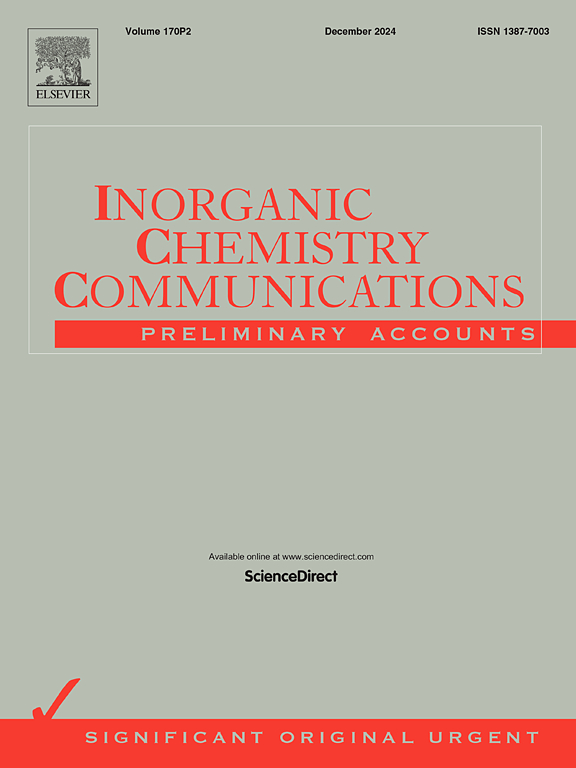制备过渡金属碳气凝胶催化剂用于HMF高效电氧化增值的一般策略
IF 4.4
3区 化学
Q1 CHEMISTRY, INORGANIC & NUCLEAR
引用次数: 0
摘要
缺乏高性能、低成本的电催化剂是电催化氧化5-羟甲基糠醛生产2,5呋喃二羧酸的关键挑战。在这项工作中,我们报告了一种通过壳聚糖-过渡金属-离子配位的碳气凝胶负载的高分散性过渡金属催化剂的新方法。实验结果表明,Ni2+、Co2+和Cu2+均能与壳聚糖配合形成稳定的凝胶,并通过热解得到高度分散的过渡金属基催化剂(Co@NC、Ni@NC和Cu@NC),其中Cu@NC表现出最佳的HMFOR活性,HMF转化率接近100%,FDCA选择性高达98.1%,法拉第效率高达95.3%。机理研究表明,与Co@NC和Ni@NC相比,Cu@NC能够积累更多有效的氧化活性物质,从而获得更高的HMFOR电流密度,并且Cu@NC电极上HMF的电氧化遵循HMFCA氧化途径。本研究为高分散性碳气凝胶负载过渡金属催化剂的宏观制备提供了一种通用和简便的策略,以实现高效的HMF电催化增值。本文章由计算机程序翻译,如有差异,请以英文原文为准。

A general strategy for the preparation of transition metal carbon aerogel catalysts for efficient electro-oxidative valorization of HMF
The lack of high-performance, low-cost electrocatalysts is the key challenge for the production of 2,5 furandicarboxylic acid via electrocatalytic oxidation of 5-hydroxymethylfurfural. In this work, we report a novel approach for the preparation of highly dispersible transition metal catalysts loaded by carbon aerogel-loaded via a chitosan-transition-metal-ion coordination. The experimental results demonstrated that all of Ni2+, Co2+ and Cu2+ were able to coordinate with chitosan to form stable gels, which were then pyrolyzed to obtain highly dispersed transition metal-based catalysts (Co@NC, Ni@NC and Cu@NC) The Cu@NC exhibited the best HMFOR activity with high HMF conversion (nearly 100 %), FDCA selectivity (98.1 %), and Faraday efficiency (95.3 %). Mechanistic studies showed that Cu@NC was able to accumulate more effective oxidatively active species and thus achieve higher HMFOR current density compared to Co@NC and Ni@NC, and that the electrooxidation of HMF at the Cu@NC electrode followed the HMFCA oxidation pathway. This study provides a general and facile strategy for macropreparation of highly dispersible carbon aerogel-loaded transition metal catalysts for efficient electrocatalytic valorization of HMF.
求助全文
通过发布文献求助,成功后即可免费获取论文全文。
去求助
来源期刊

Inorganic Chemistry Communications
化学-无机化学与核化学
CiteScore
5.50
自引率
7.90%
发文量
1013
审稿时长
53 days
期刊介绍:
Launched in January 1998, Inorganic Chemistry Communications is an international journal dedicated to the rapid publication of short communications in the major areas of inorganic, organometallic and supramolecular chemistry. Topics include synthetic and reaction chemistry, kinetics and mechanisms of reactions, bioinorganic chemistry, photochemistry and the use of metal and organometallic compounds in stoichiometric and catalytic synthesis or organic compounds.
 求助内容:
求助内容: 应助结果提醒方式:
应助结果提醒方式:


